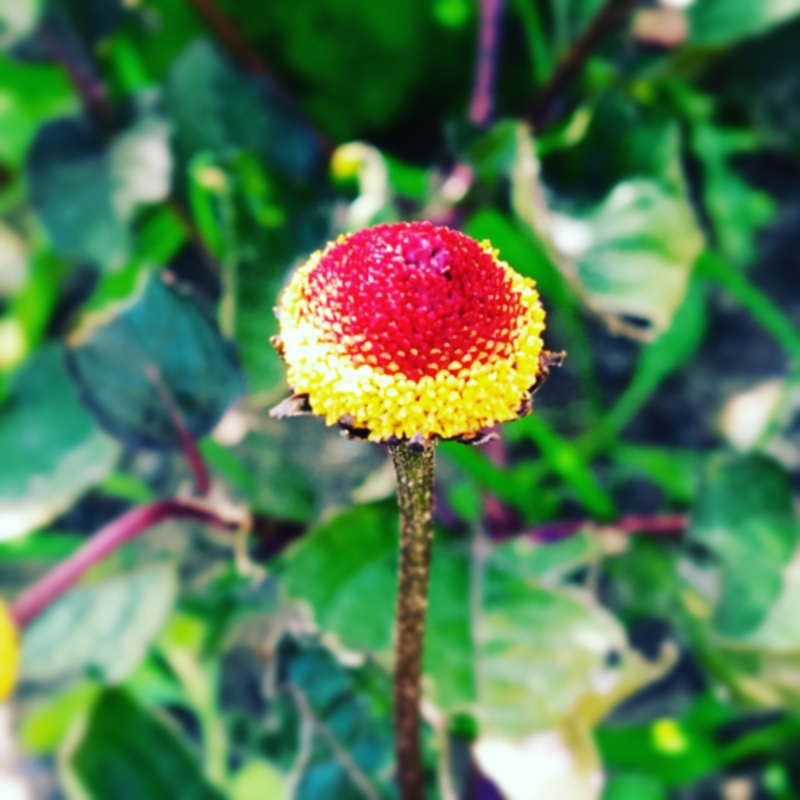
Acmella oleracea syn. Spilanthes oleracea ; Spilanthes acmella
Electric Daisy
Acmella oleracea is a native of tropical areas, and is a tender perennial usually grown as an annual. The common name 'Electric Daisy' comes from the fizzing or tingling sensation when the flower buds are eaten.The laves of the plant are dark green on the upper side, paler underneath, sometimes with red veining. The plant has a trailing habit, and the flower buds are yellow and red and conical - said to resemble a lit gas-mantle.
Contributed by @ellenmarygardening
-
Full sun to partial shade
-
Occasional watering
-
Not Frost hardy
-
Free draining
Common name
Electric Daisy
Latin name
Acmella oleracea syn. Spilanthes oleracea ; Spilanthes acmella
type
Annual
family
Asteraceae
ph
5.5 - 8.0 Acid - Neutral
Plant & bloom calendar
-
Best time to plant
-
When the plant will bloom
full grown dimensions
 0.35 M
0.45 M
0.35 M
0.45 M
Acmella oleracea syn. Spilanthes oleracea ; Spilanthes acmella
Acmella oleracea is a native of tropical areas, and is a tender perennial usually grown as an annual. The common name 'Electric Daisy' comes from the fizzing or tingling sensation when the flower buds are eaten.The laves of the plant are dark green on the upper side, paler underneath, sometimes with red veining. The plant has a trailing habit, and the flower buds are yellow and red and conical - said to resemble a lit gas-mantle.
Flowering
From Early Summer TO Early Autumn
Acmella oleracea flowers through Summer, from early Summer through to early Autumn
Planting
From Late Spring TO Early Summer
Plant in a sunny or partially sunny site in any type of soil as long as it is free-draining. If plants were started off in the greenhouse, plant them out in the evening, and water deeply.
Propagate by stem cuttings
From Late Spring TO Early Summer
This plant can be propagated by stem cuttings. Choose a stem that is already rooting. Cut the stem near the crown, keeping attached rootlets intact. Plant this in a pot, or direct into the garden after all risk of frost has passed, into a sunny, or partially sunny site, into free-draining soil. Water well, and keep well-watered while the new plant establishes.
Propagating by seed
From Mid Spring TO Mid Spring
Sow seed in a greenhouse, if you are in a temperate climate. In a tropical climate the seed can be sown direct in the soil. Avoid damp or cool conditions, or the seeds may rot. In the right conditions, seeds should germinate in about 12 days.















